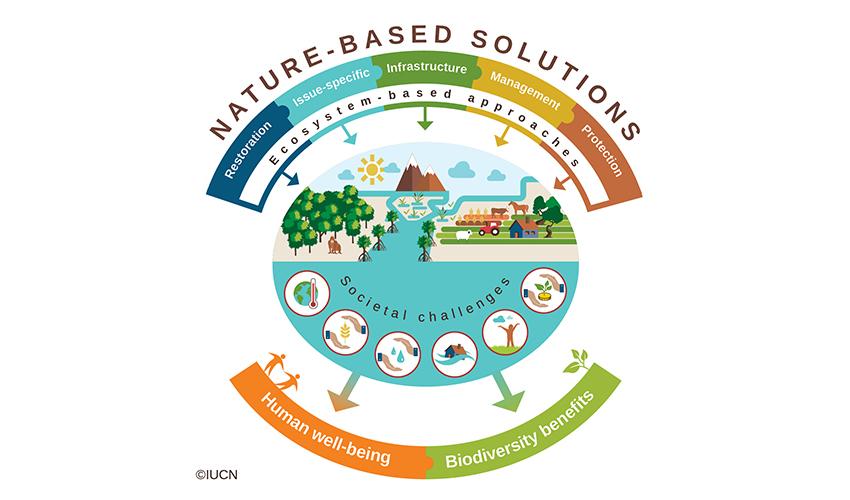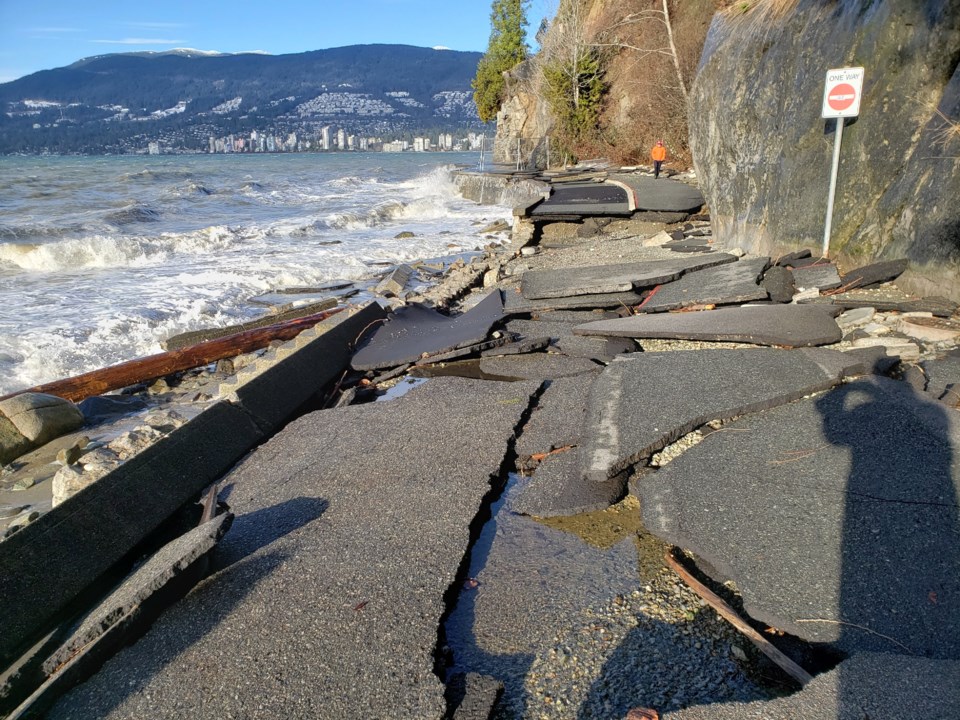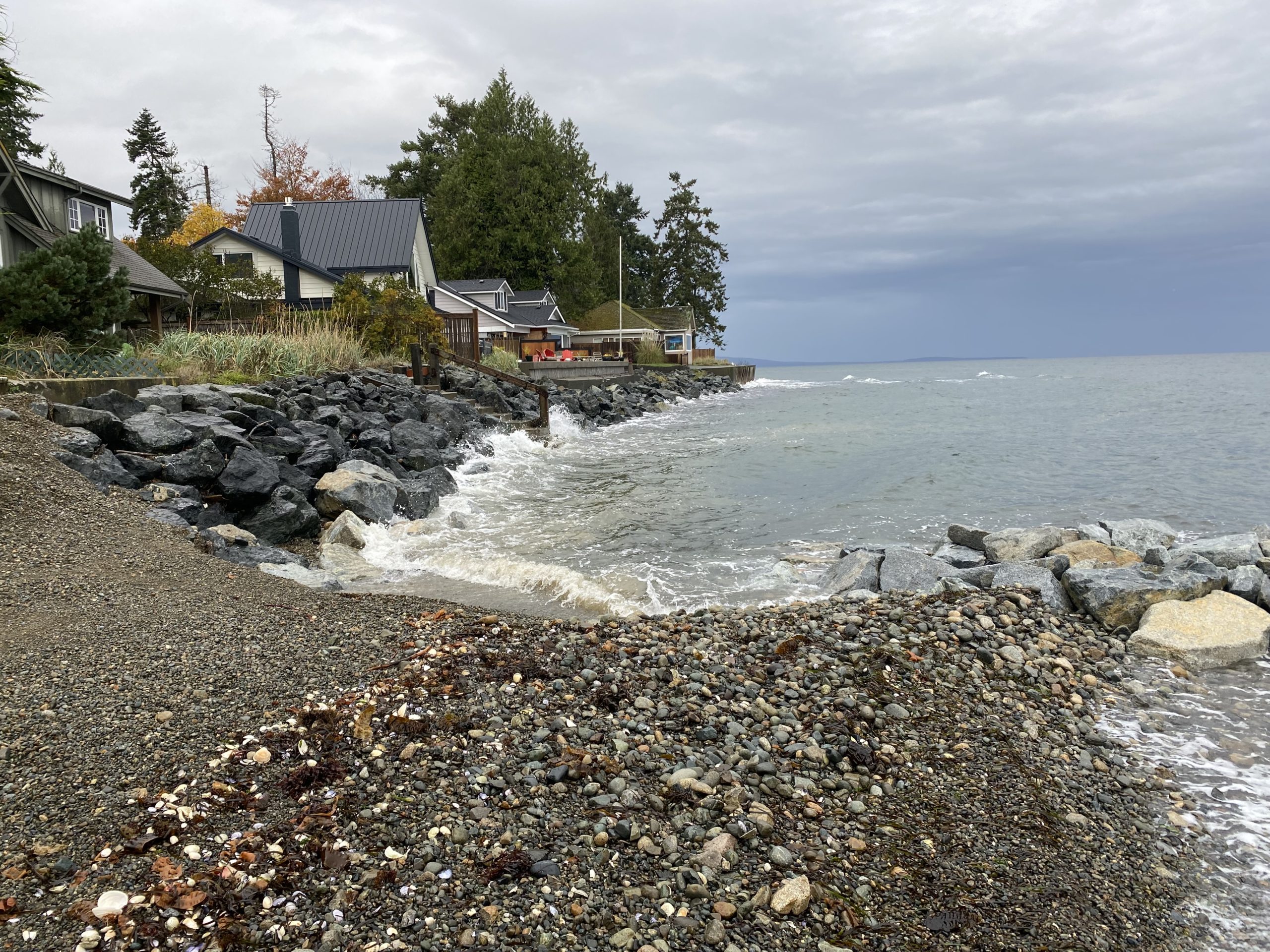What are nature-based solutions?
Nature-based solutions (NBS) are defined as “actions to protect, sustainably manage, and restore natural or modified ecosystems, that address societal challenges effectively and adaptively, simultaneously providing human well-being and biodiversity benefits.”
- International Union for Conservation of Nature

Structure of nature-based solutions and their benefits to people and the environment. Image source: International Union for Conservation of Nature.
Nature-based solutions are recognized globally as effective and adaptive tools in managing ecosystems and infrastructure, using natural principles and processes to provide environmental, economic and societal benefits to our communities. NBS help to work with the natural environment to address major challenges, for example, food and water security, climate change, human and ecosystem health and others.
Nature-based shoreline solutions are nature-friendly approaches that work with existing shoreline processes and features to restore and protect healthy shoreline ecosystems that are more resilient to the impacts of climate change. Other benefits of NBS include human well-being and access to shorelines, and improved biodiversity and ecosystem function (Glick et al. 2020).
Nature-based solutions that benefit the shoreline can be carried out by waterfront property owners on marine or lake shores and also by residents on upland properties. Activities such as landscape maintenance and management of run-off on upland properties are also important because these have the potential to contribute to contamination and erosion on the shoreline.
In contrast to conventional shoreline hardening that can include hard armour, sea-walls and rip-rap, nature-based shoreline solutions are based on effective designs that consider local coastal conditions and incorporate natural materials like logs, rocks, and native vegetation. Together these approaches can protect shoreline properties and benefit shoreline ecosystems.
Images of Green Shores for Homes projects with the riparian buffer made of logs, rocks and native vegetation along the shore.
Nature-based solutions make shorelines more resilient and adaptive to climate change, sea-level rise, coastal squeeze, storm surges, floods and erosion, whereas rigid hard armouring is not effective in mitigating those risks and instead, can be accompanied by erosion and threaten shoreline infrastructure, leading to catastrophic failures (SNC-Lavalin 2014). For example, winter storms have destroyed a portion of a sea-wall in Vancouver, that could not withstand a King Tide in January 2022. Climate change causes more intense and unpredictable weather, wind and wave action, and as seen in Vancouver (below), hard armour was not able to withstand those impacts.

King Tide destroyed a seawall in Stanley Park, Vancouver. Photo by Roxanne Borisov, January 2022. Source link.
Nature-based shoreline solutions utilize a more natural shoreline gradient that helps to gradually absorb the impact from waves. This reduces the risks to shoreline structure and function from erosion and flooding.
Green Shores promotes the use of nature-based solutions (as seen in the foreground) to protect properties from sea-level rise, storm surges, erosion and other shoreline risks. Photo by Kelly Loch, 2021.
In addition to providing protection for homeowners and communities, NBSs for shorelines support biodiversity by creating and protecting habitat for both aquatic and terrestrial life, including amphibians, invertebrates, fish, birds, marine mammals, insects, and other wildlife.
Green Shores nature-based solutions for shores create habitat and healthy ecosystems for terrestrial and aquatic wildlife.
Natural shorelines and native vegetation filter pollution and sustain healthy ecosystems. Without vegetation, shoreline protection that relies on hard armour, causes bioaccumulation of toxins in water and food chains, negatively affects nutrient cycling, and significantly limits habitat and resources for wildlife. Hard armour also creates a physical barrier along the shore, reducing the aesthetic value and recreation opportunities for shoreline users. In addition, installation and maintenance of shoreline hardening can be more expensive compared to nature-based solutions that require less maintenance and are self-adaptive to the changing shoreline environment (Green Shores 2020: Impact, Value and Lessons Learned, ESSA).
Choose Nature-based Solutions
Consider adopting nature-based solutions for your upland and waterfront properties! Check out our Green Shores pages to learn more about Green Shores shoreline certification for homeowners and shoreline developments. For more information about nature-based solutions, visit the Resilient Coast for Salmon and TransCoastal Adaptations: Centre for Nature-based Solutions websites and find tips for reducing your environmental impact.








